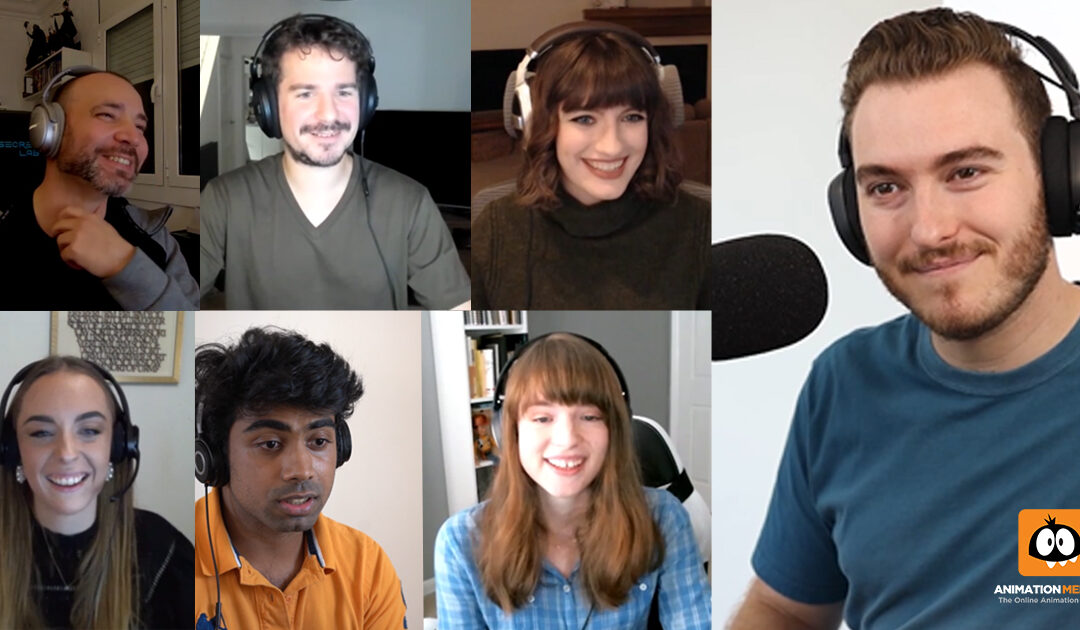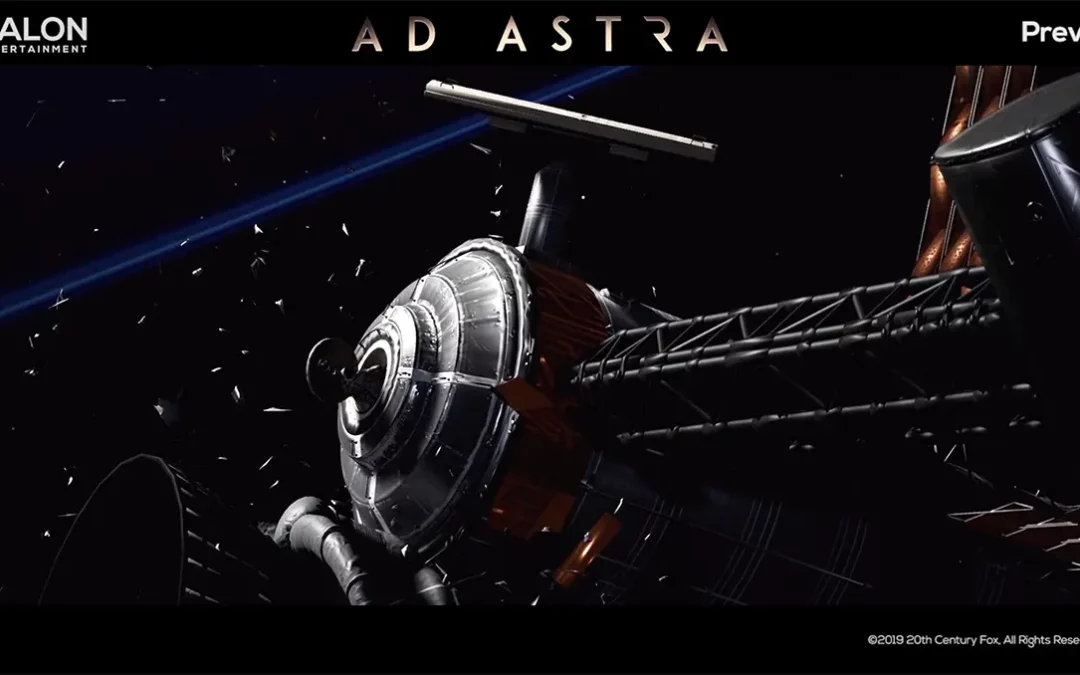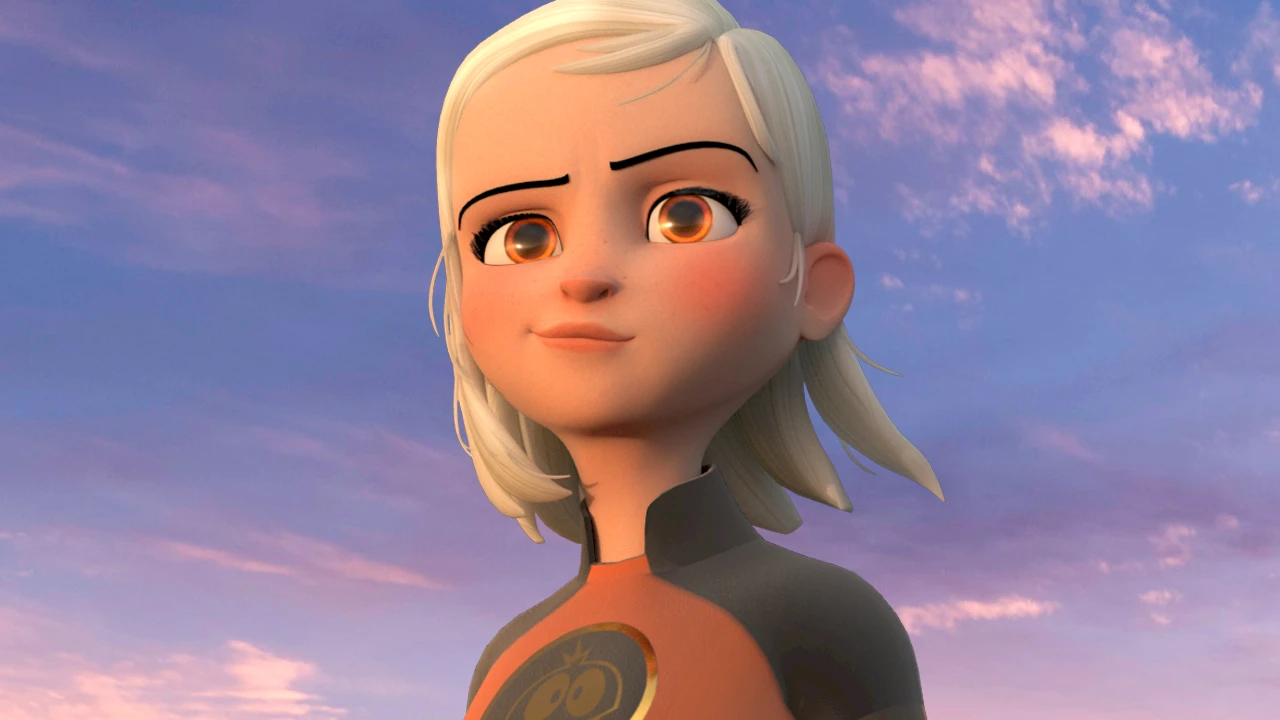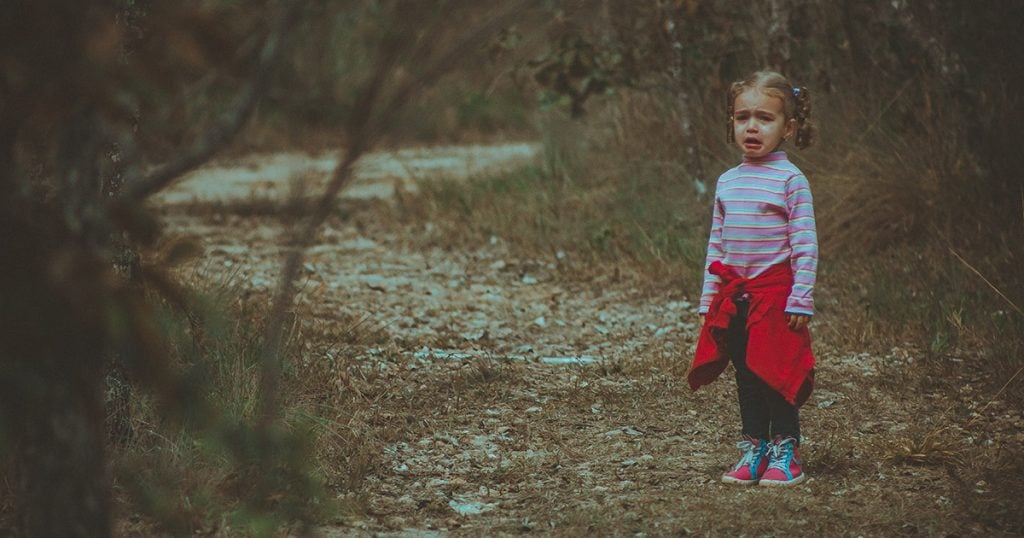
via Lucas Pezeta
When we think about fear it is important to realize that there are several types of fear. There is the “fight or flight” type of fear which is an immediate reaction to a sudden or impending threat. This is the type of fear or terror in which we can clearly see the more extreme outward indications or signs present in body language and facial expressions of the person being affected.
Next, we have the type of fear which is more inward. This can include dread of impending consequences or phobias like the fear of snakes etc. These types of fears also display outward gestures of the hands and body as well as facial expressions, but they are more subdued compared to the sudden shock of “fight or flight”.
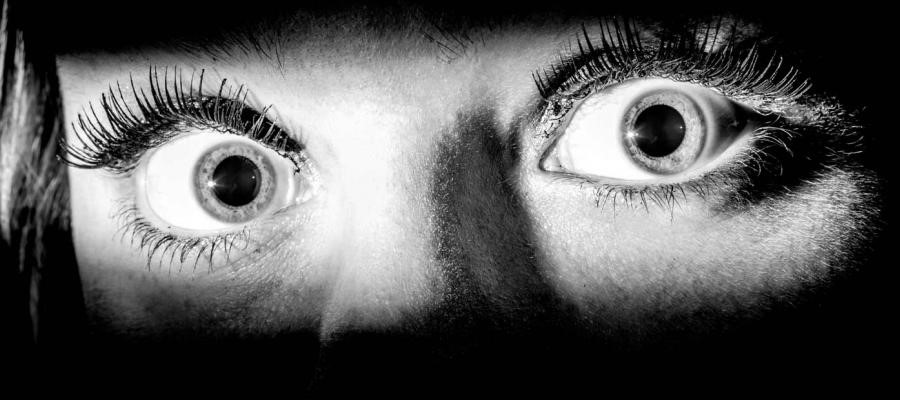
Fear is all in the eyes!
Taking into account what type of fear you are trying to display in your animation, you will create poses and attitudes which will reflect what your character should be feeling as a reaction to the situation they are in. If your character needs to show immediate reaction, such as shock or terror, you should see the eyes widen.
There will be more white surrounding the iris or colored part of the eye. The pupils may dilate or constrict to pinpoints.
Often the hands will come up protectively to shield the eyes from the terror…
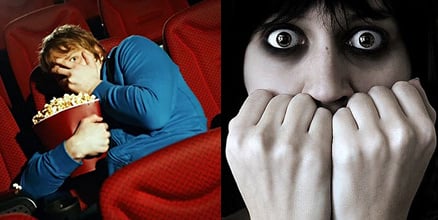
Protective Hands and White Knuckles (via Shutterstock)
…Or they’ll travel toward the mouth area.
These gestures can become a bit cliché, so it’s important to know the personality and background of your character and try to create your poses in a way that works with how your particular character might behave.
For example, Winnie the Pooh would show terror much differently than would Medusa in The Rescuers:
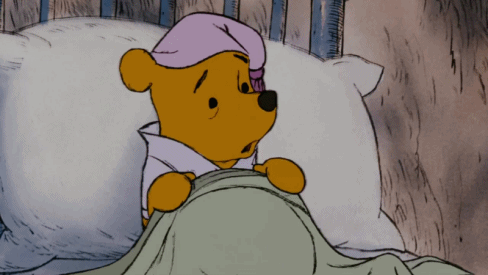
Winnie-the-Pooh Hiding Under His Blankets (via Disney)
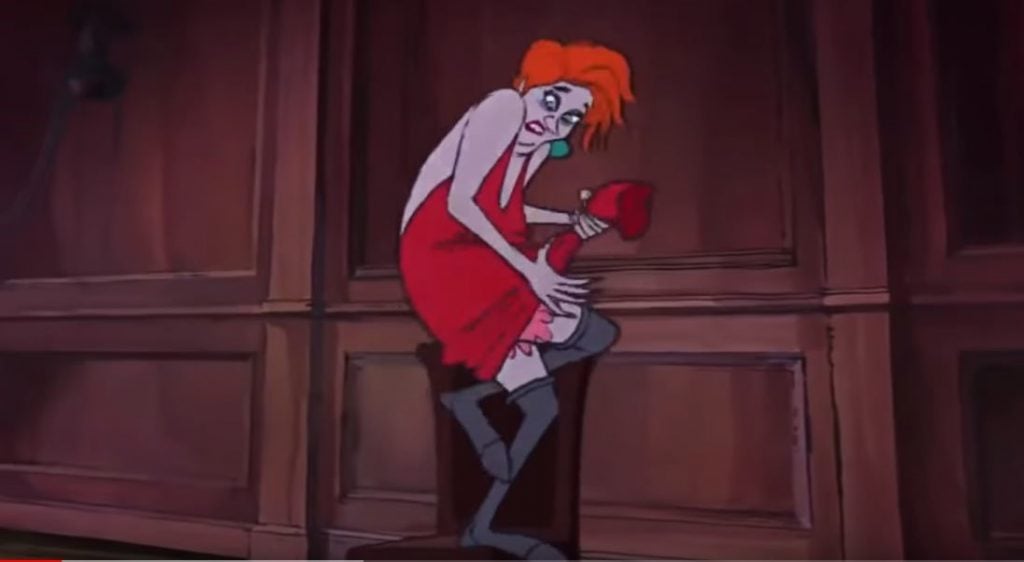
Medusa from Disney’s The Rescuers
Medusa is much more outwardly expressive with her gestures, while Pooh Bear tries to shrink and become invisible.
Facial Expressions
I want to talk a little bit more about the face and how facial expressions can really sell the idea of terror. My favorite fearful expression of all-time is from Who Framed Roger Rabbit.
My favorite fearful expression of all-time is from Who Framed Roger Rabbit.
Jessica Rabbit is about to meet her doom. A giant vat of cartoon-erasing acid called “dip” has just been revealed, and she knows what it can do to her and all of her beloved, animated (hand drawn and painted) friends. It will dissolve them utterly. She pulls the MOST expressive face and I just love it. In fact, I learned more from this face on how to draw and show fear then just about anything else I have studied. Have a look:
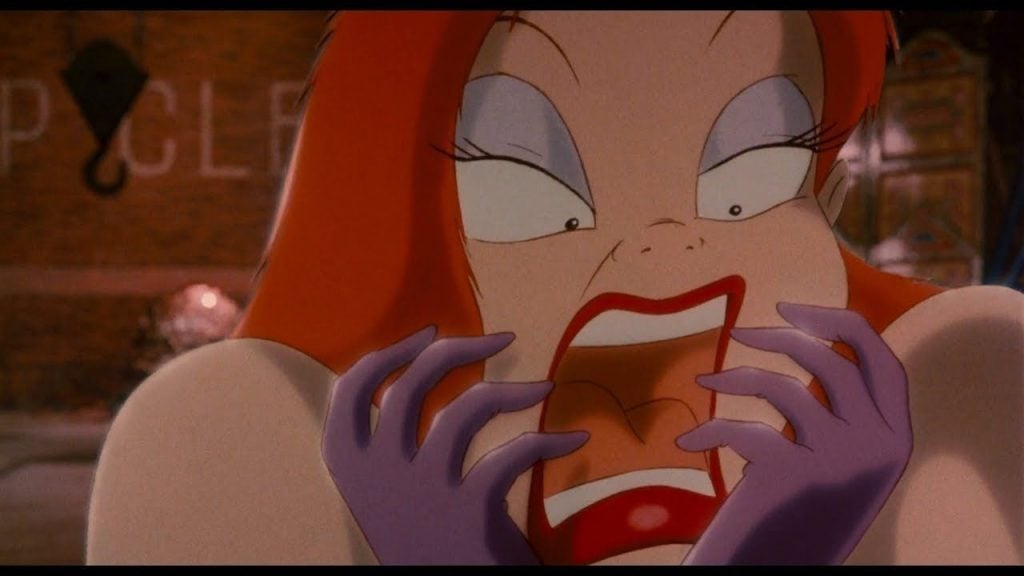
Jessica Rabbit in Who Framed Roger Rabbit (Disney)
Pretty good right? Notice the hands coming up to the face. Notice the down-turned corners of the lower lip and the pupils constricting. Eyebrows are up, upper lip is raising up and forcing the nose upward. It’s great. BUT, it gets even better!!
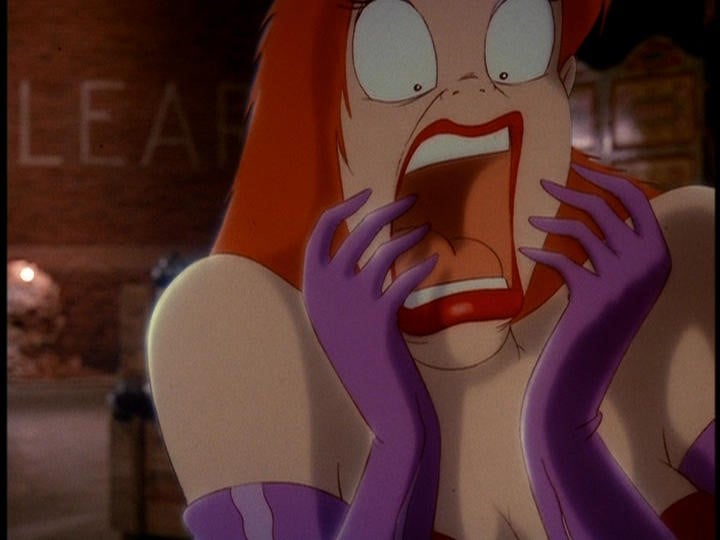
Jessica Rabbit Showing Extreme Terror (Disney)
Now, to me, THAT shows extreme fear. Terror. Even her hair gets frazzled. That mouth is one I have copied many times in my animation career.
Posing
So we know that the face can be expressive, but the body and hands can also be expressive and are needed to show fear. The shoulders come up, the knee may raise up (to protect the body- as in The Rescuers image). Relaxed fingers have no place in a fearful pose. Make sure you give them purpose and strength. Here is a drawing I did for a book on facial expressions. I found a photograph of a man showing fear and used it as reference to pose my lion-type character:
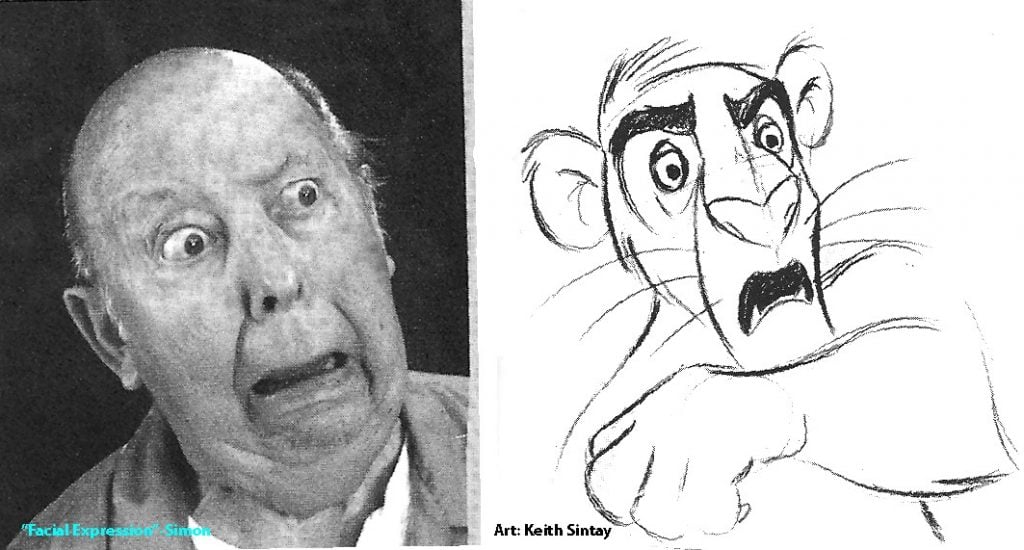
Reference for Lion Animation
Here you can see I brought the arm up—again, unconscious protection that we do when we are afraid.
The other type of fear that falls under the “impending doom” category or phobias is displayed more with subdued facial expressions and things like sweating, a sick stomach (hunched over) and perhaps a hand on the forehead or folded arms with sloped shoulders. These things show anxiety and worry, which are also types of fear. Rational or irrational, our bodies often react the same way.

Fear of Impending Doom (Li Kim Goh / Getty Images)
Body Language
Body language also expresses fear. Shying away from the danger and protecting oneself from it by leaning away is a good way to show your character is afraid:

Leaning Away from Danger (via Shutterstock)
Here are some extreme and cartoony examples of body language expressing fear:
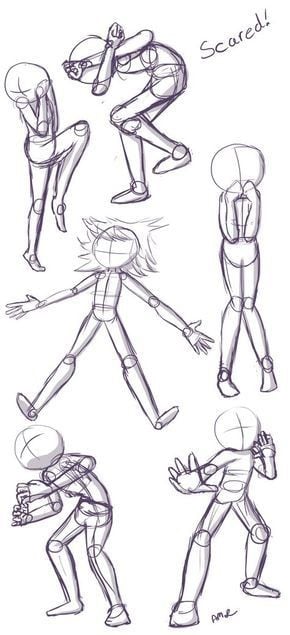
Cartoony Poses (AML)
The body language you can show in mobility like a run can show fear. If your character is running away from something, you might have the arms out in front, or if the character is even more cartoony, the butt can be tucked under as if the legs are leading and the upper body is trying to keep up.
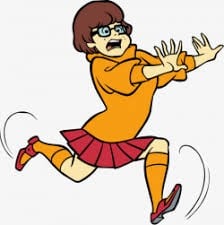
Velma in Scooby Doo (Hanna-Barbera)
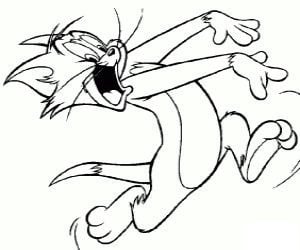
Tom from Tom and Jerry (MGM)
Even more cartoony ways of showing fear have been used in animated characters of the past. Things like hair standing straight up, chattering teeth, or even knocking knees are a little too silly to be used in today’s animation. There might be a place for them somewhere, but I would recommend staying away from such vaudevillian silliness. Try instead to find reality in your animation, and push that to a believable extreme. It’s ok to caricature shakiness or trembling, but make sure it fits within the context of your project and more importantly, make sure it fits how your character would really behave.
Try to find reality in your animation, and push that to a believable extreme.
I hope you have fun animating fear and that you are able to find a way to get inside the mind of your character or creature to make your audience believe that what that character is experiencing is true, unabashed, unrestricted emotional FEAR.
Check out some of Keith Sintay’s work below!
Want to be mentored by professional animators?
Start your animation journey today by learning from animators at studios like Blue Sky, Pixar, and Sony Imageworks! Get more information about Animation Mentor’s Character Animation Program.
